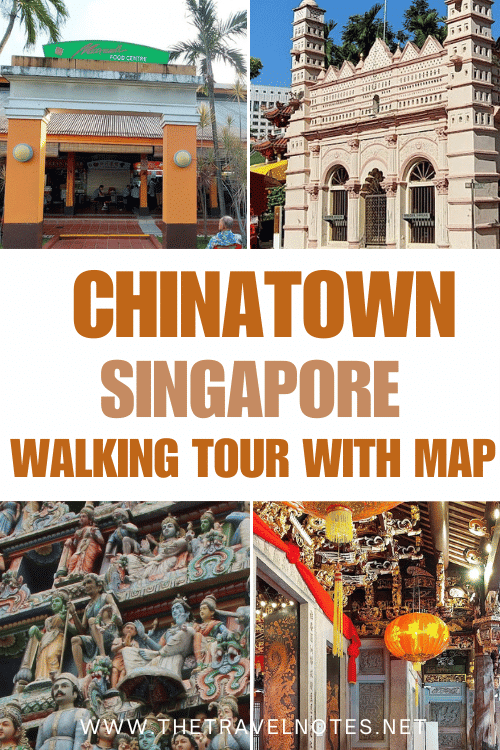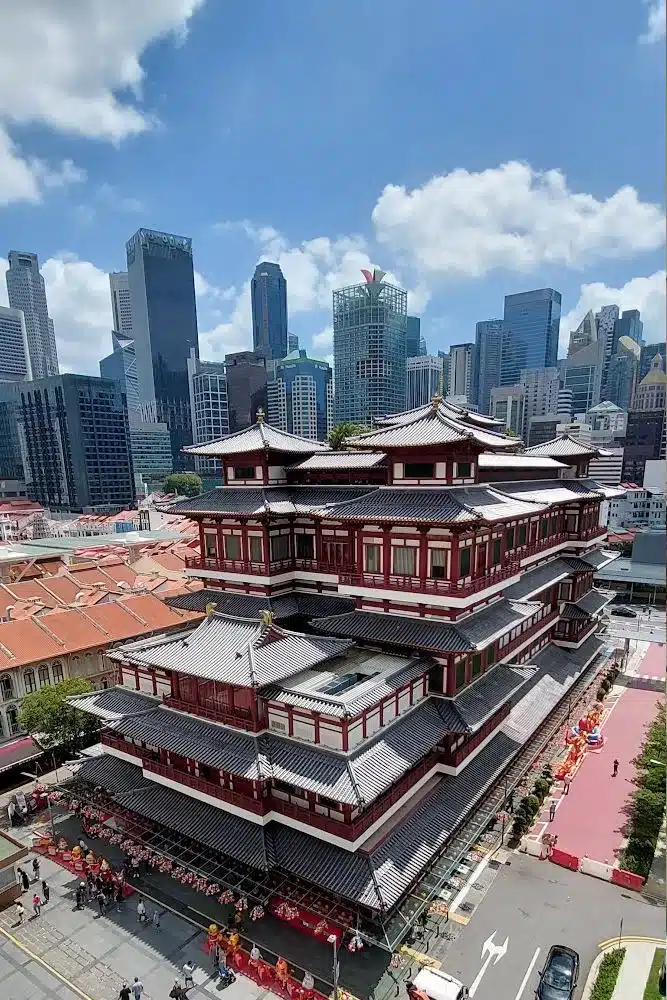This article shows you: Chinatown Singapore Self-Guided Walking Tour with Map
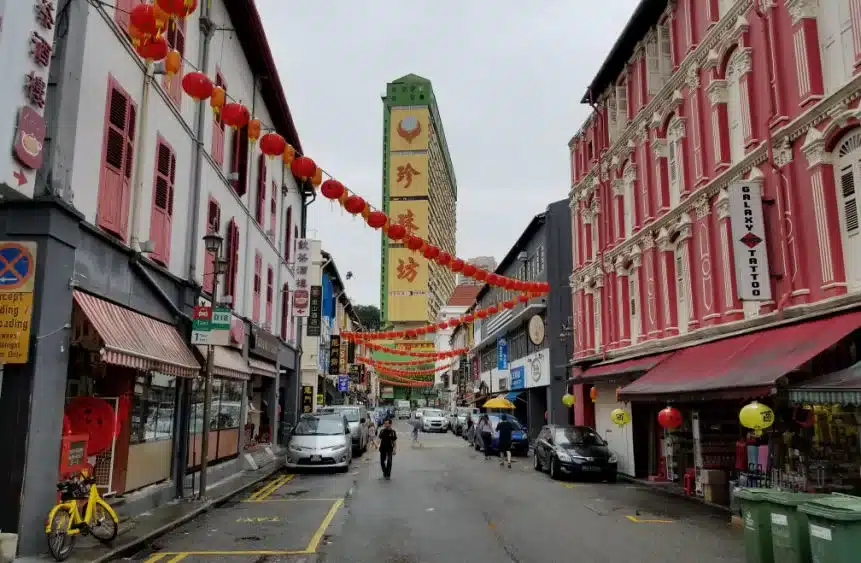
Planning a Chinatown walking tour (self-guided)? This Chinatown Singapore itinerary guides you through historic streets, famous landmarks, and hidden gems, each with unique historical significance.
Explore cultural highlights like the Buddha Tooth Relic Temple, Maxwell Food Centre, and Sago Street, once known as “the street of the dead.”
With this detailed Chinatown Singapore map, you’ll uncover the area’s rich history, from coolie laborers to opium dens.
Whether you’re a history enthusiast or love exploring, this self-guided walking tour is the perfect way to learn about Chinatown’s untold stories.
Looking for a place to stay near Chinatown? There are plenty of great hotels in the area—from boutique capsule pods to historic shophouse stays.
Chinatown Singapore Self-Guided Walking Tour with Map
About this itinerary
This is a self-guided itinerary. On the map above in “Details,” you can download the route in KML or GPX and use it in Maps.me or another application.
You can use it without the Internet while you walk. If you want to use Google Maps, you have to search for each address.
I am covering 16 places with interesting information to make your tour more exciting.
Take the time to visit Chinatown in Singapore. It is a place worth discovering!
About Chinatown
Chinatown was established in 1822 by Sir Stamford Raffles to house the growing number of Chinese immigrants in Singapore.
Small communities of Indian traders also made this area their home.
The first immigrants arrived in Telok Ayer, once part of Singapore’s old coastline, after enduring long, challenging journeys.
Where to start?
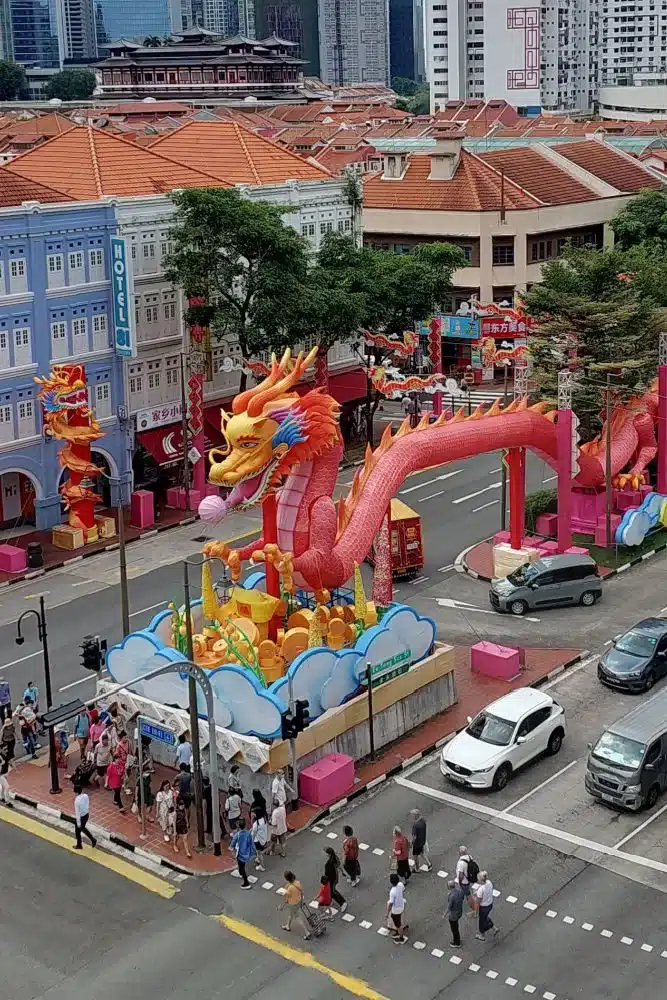
Exiting the subway through exit A, you’ll step into a lively scene filled with souvenir stalls, bustling kiosks, and tourists soaking in the vibrant atmosphere.
While it may feel overwhelming, this street is steeped in history.
Pagoda Street, your first stop, is an important piece of Chinatown Singapore history, bridging the past and the present.
1. Pagoda Street
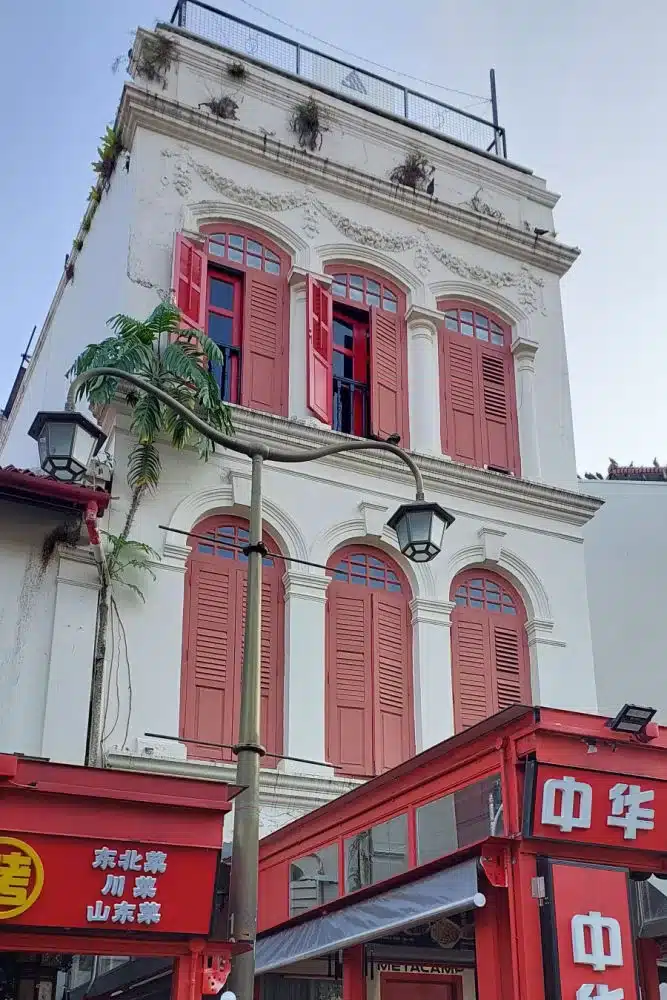
This is the first stop on the list of things to do in Chinatown Singapore.
Exiting the subway through exit A, we find Pagoda Street, once filled with opium taverns and Coolie laborers.
Number 34 hosts a typical shophouse, and number 37 houses Kwong Hup Yuen, the largest employment agency for Coolies, who endured harsh working conditions in various sectors during Singapore’s colonial period.
2. Sri Mariamman Temple
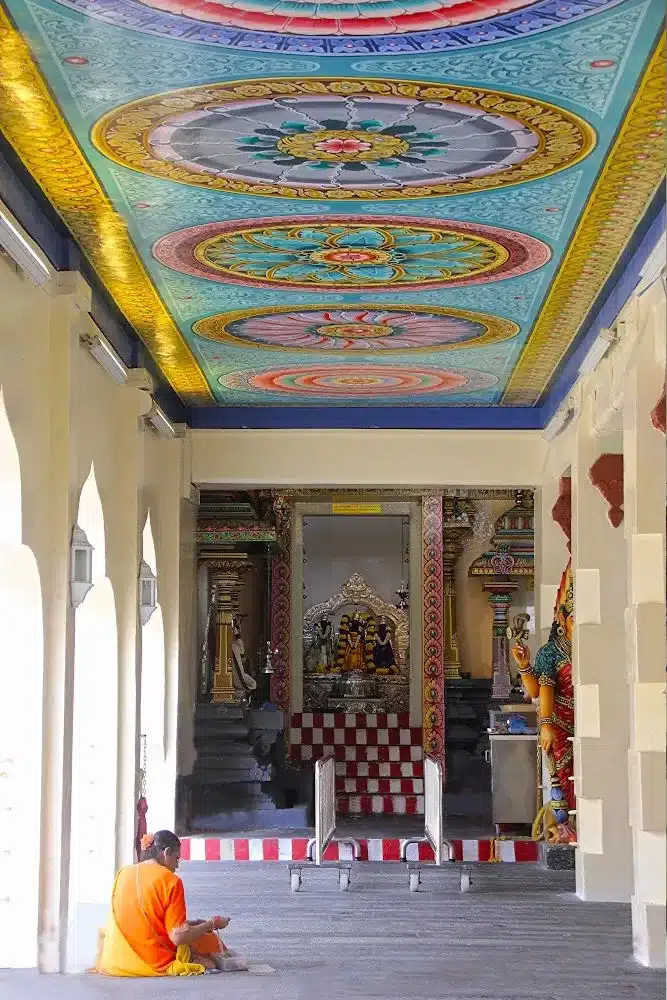
Sri Mariamman, Singapore’s first temple, now hosts worship and celebrations. It once accommodated Indian emigrants.
The beautiful “Gopuram” tower is striking and adorned with vibrant sculptures of Hindu gods and flowers.
If you’re lucky, you might witness a ceremony. Remember to leave your shoes outside.
Free entrance – Address: 244 South Bridge Rd
3. The Jamae Mosque (Chulia)
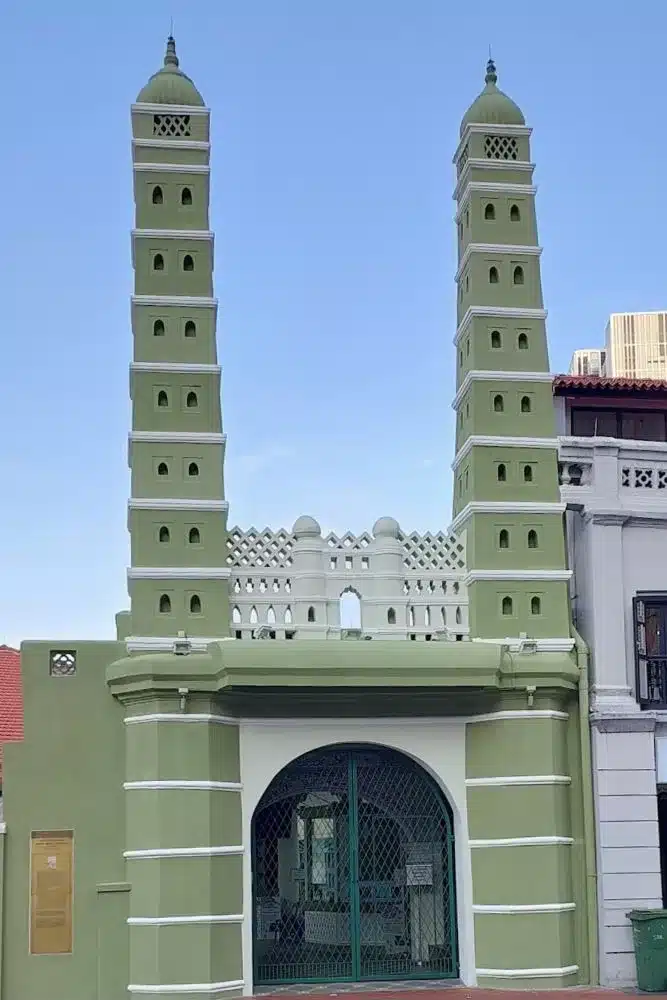
Built between 1830 and 1835, this mosque is one of Singapore’s oldest and largest. It is located near Sri Mariamman Temple and reflects the Chulia community from southern India, mainly merchants and money changers.
Though small outside, it’s spacious and well-maintained inside, recalling the vibrant Chulia presence in Chinatown.
Address 218 South Bridge Rd
4. Old Trades Mural
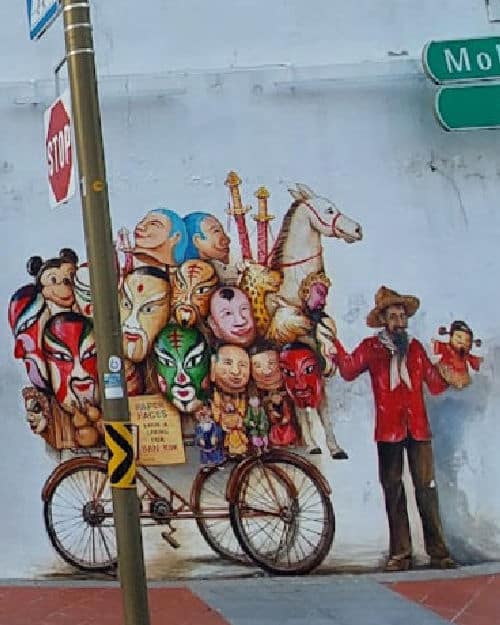
Local artist Yip Yew Chong, who grew up in Chinatown, has murals across Singapore.
His “Old Trades Mural” depicts scenes of ancient trades once common in the city.
Inspired by real characters, it includes figures like the paper mask and puppet seller from Sago Lane, bringing history to life.
Address 3 Mohammed Ali Lane
5. Temple Street

Parallel to Pagoda and Smith Streets, this street was once popular with Cantonese Opera lovers.
The nearby Lai Chun Yuen Theater was famous for its operas.
The street’s name honors the area’s many temples. At the end of the street, you can see the iconic yellow People’s Park Complex building.
Exploring more of Singapore? Check out my Orchard Road Guide for a mix of history & modern shopping.
6. Chinatown Complex
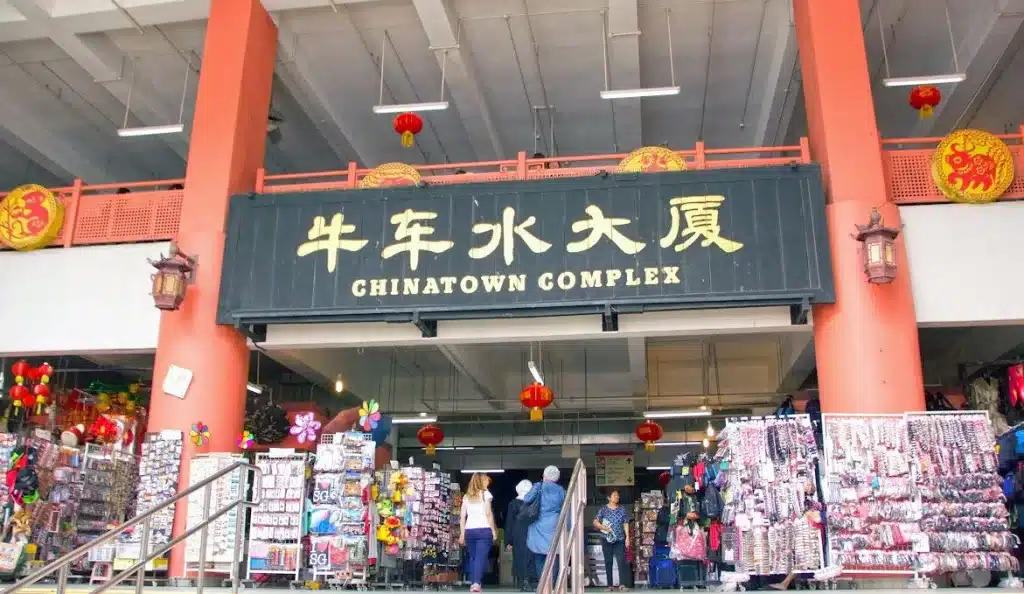
Built-in 1981, the Chinatown Complex is a vibrant destination for Chinatown Singapore shopping and local eats.
At the entrance, browse stalls filled with clothes, amulets, and souvenirs.
Inside, savor dishes like Chicken Rice, and explore the bustling underground “wet market” offering fresh produce, seafood, and even frogs.
Address: 335 Smith Street.
7. Sago Street
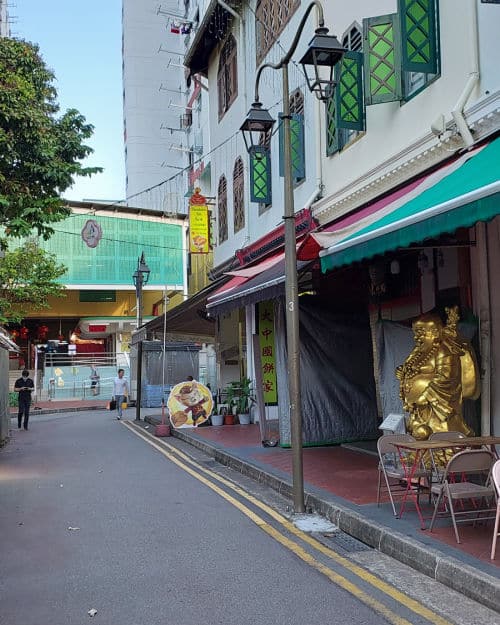
Sago Street leads to the Buddha Tooth Relic Temple and Museum near the Chinatown complex.
Once home to Sagú factories, it was known as “the street of the dead.”
The upper floors of houses were final resting places for evicted Chinese immigrants, while the lower floors were used for funerals.
8. Buddha Tooth Relic Temple
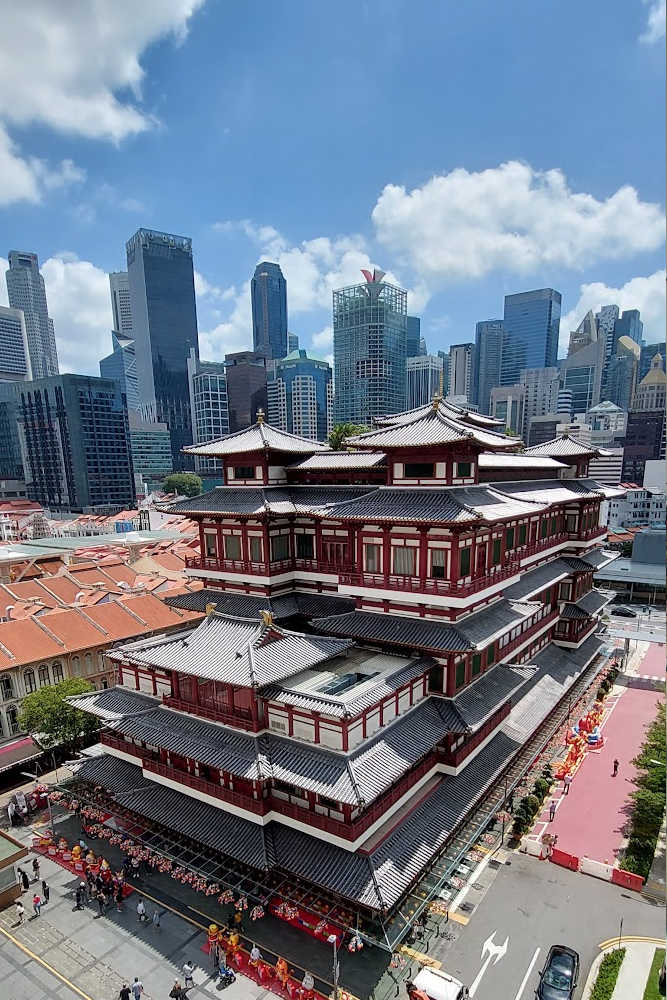
Don’t miss visiting one of Singapore’s most beautiful temples.
Start with the top-floor garden, then explore each level to learn its history.
The first floor hosts religious activities, and the underground “food court” is a hidden gem that serves vegetarian food, Chinese coffee, and desserts.
The temple is accessible by stairs and elevators.
Free entrance. Address: 288 South Bridge Rd
For another cultural adventure, follow my Little India Walking Itinerary to uncover more heritage sites!
9. Jinrikisha Station
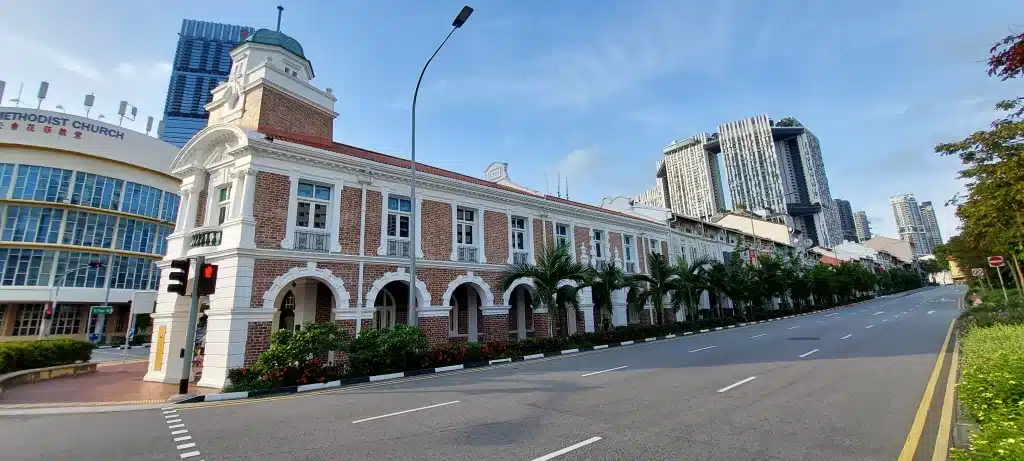
Built-in 1903, Jinrikisha Station served as the rickshaw administration center.
Chinese immigrants, known as “Coolies,” faced harsh conditions as rickshaw drivers here.
This historical site reflects their struggles and contributions. Nearby, behind the Thian Hock Keng temple, you can see part of Yip Yew Chong’s mural depicting scenes from this challenging period.
Address 1 Neil Rd, #01-01
10. What to Eat in Singapore: Maxwell Food Centre
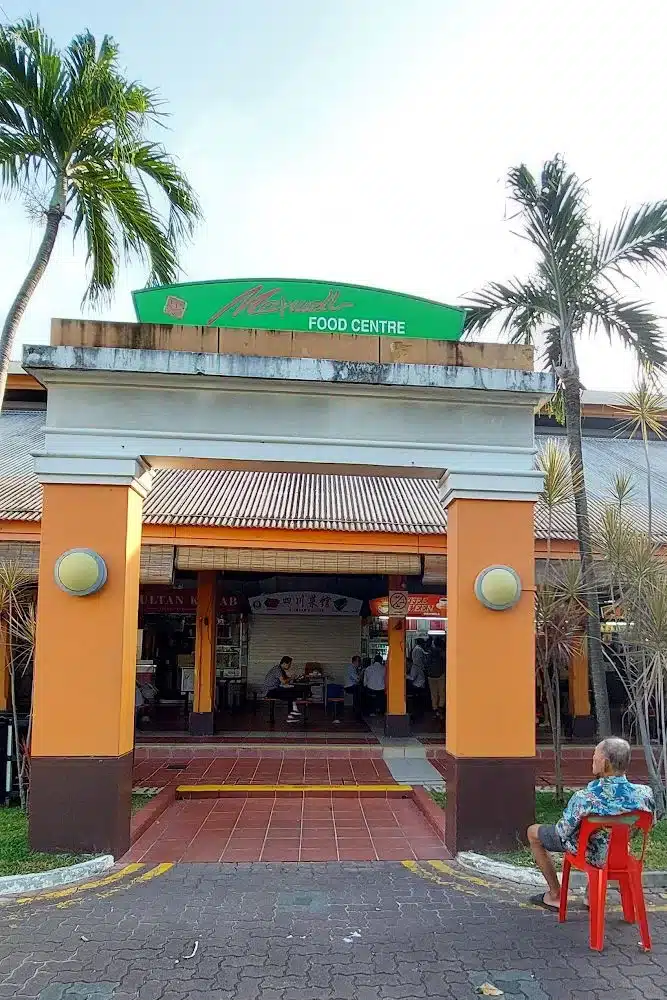
This food center, which has existed since the 1980s and is located next to the Singapore City Gallery, is one of the best-known Hawker Centers and a must-visit for anyone exploring what to eat in Singapore.
At its small food stalls, you’ll find traditional dishes from Chinese, Indian, and Malay cuisines, alongside refreshing juices, beers, and the uniquely sweet Chinese coffee known as “Kopi,” made with condensed milk.
Address: 1 Kadayanallur St
11. The Statues of the Sansui Women
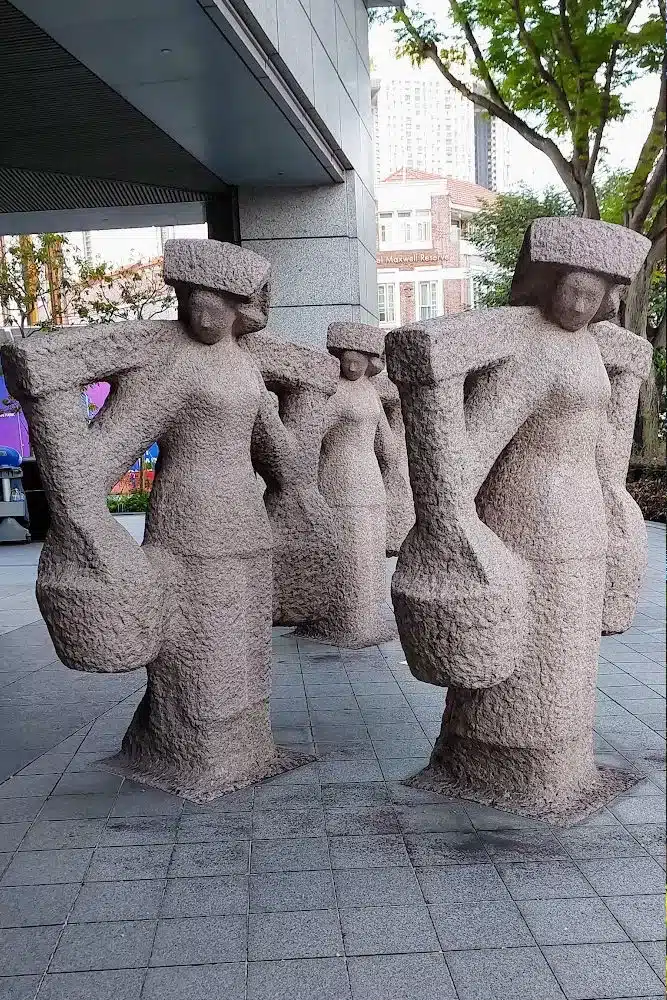
It is a sculpture to remember the strong and hard-working “Samsui” women who came from the Samsui province in China and emigrated to Singapore between the 1920s and 1940s in search of work to support their families.
These strong women worked long hours on construction sites to transport materials and clear debris.
Address: 45 Maxwell Rd. next to the Singapore Gallery entrance and across the street from Maxwell Food Center.
12. Singapore City Gallery
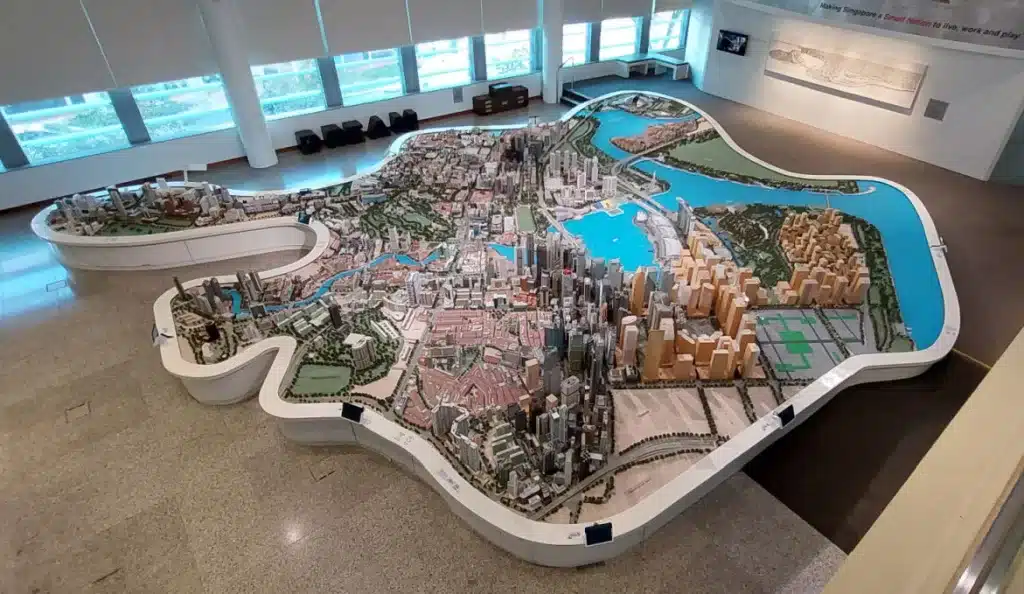
You can’t miss visiting the Singapore City Gallery, where you can find a variety of interactive and multimedia exhibits that showcase Singapore’s urban planning and development over time.
The most impressive is the large model, which shows Singapore and how it has been developed and planned.
Free entrance. Address: 45 Maxwell Road
13. Nagore Dargah Indian Muslim Heritage Centre
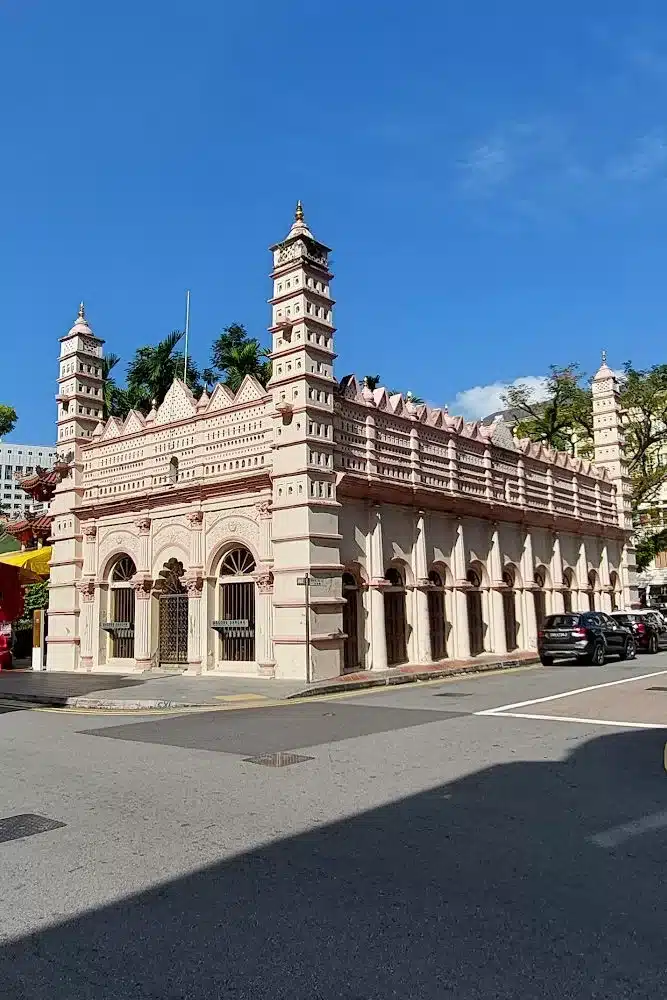
This center, next to the Thian Hock Keng temple, is an important place for Indians and the Muslim community in Singapore.
It was built between 1827 and 1830 in memory of a Muslim saint buried in Nagore in southern India.
Its architecture blends Palladian and Islamic styles, reflecting Singapore’s cultural and religious diversity.
Address: 140 Telok Ayer Street
Want an enjoyable walk? Explore East Coast & Geylang for a mix of food, culture & local gems.
14. Thian Hock Keng Temple
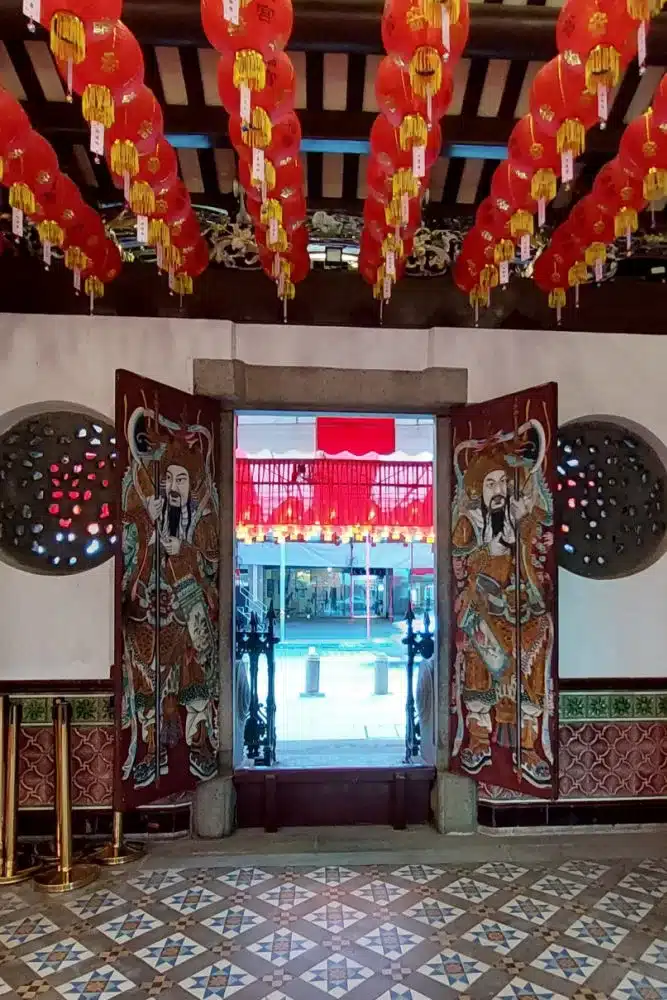
Hokkien immigrants, who braved perilous sea voyages from China to Singapore in pursuit of a better life, built this temple as an enduring symbol of gratitude.
These voyages were fraught with danger, and the immigrants attributed their survival to Mazu, the Chinese goddess of the sea and protector of sailors.
Address: 158 Telok Ayer St.
15. Thian Hock Keng Mural
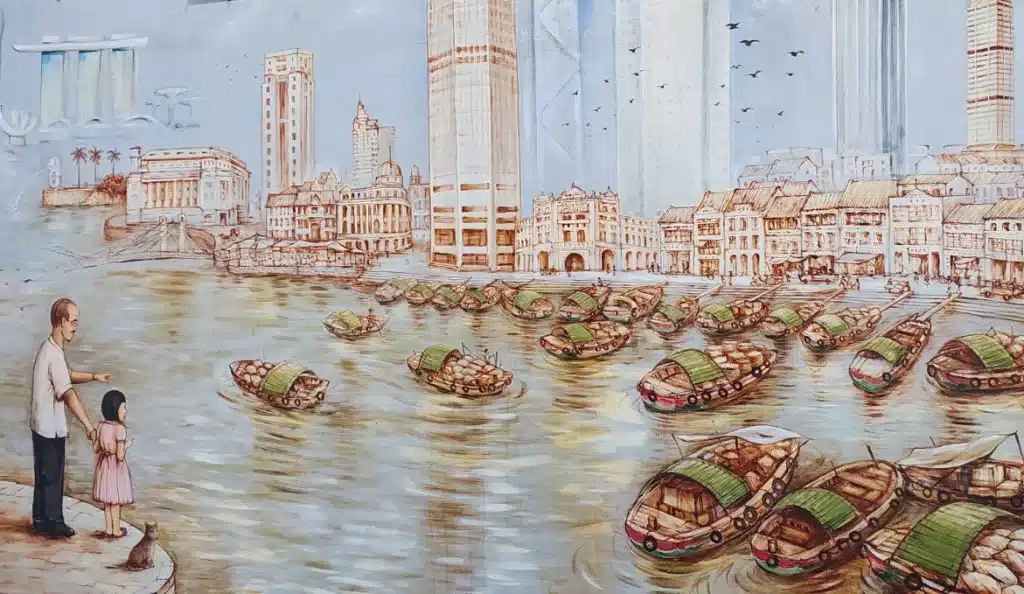
Be sure to visit the back of the temple. There, you will find an amazing 44-meter mural created by Yip Yew Chong.
The mural visually tells the story of the first Chinese immigrants to Singapore. Read it from right to left like the Chinese. Yip Yew murals add color and life to our Chinatown Walking Itinerary in Singapore.
Address: 158 Telok Ayer St
16. My Awesome Cafe
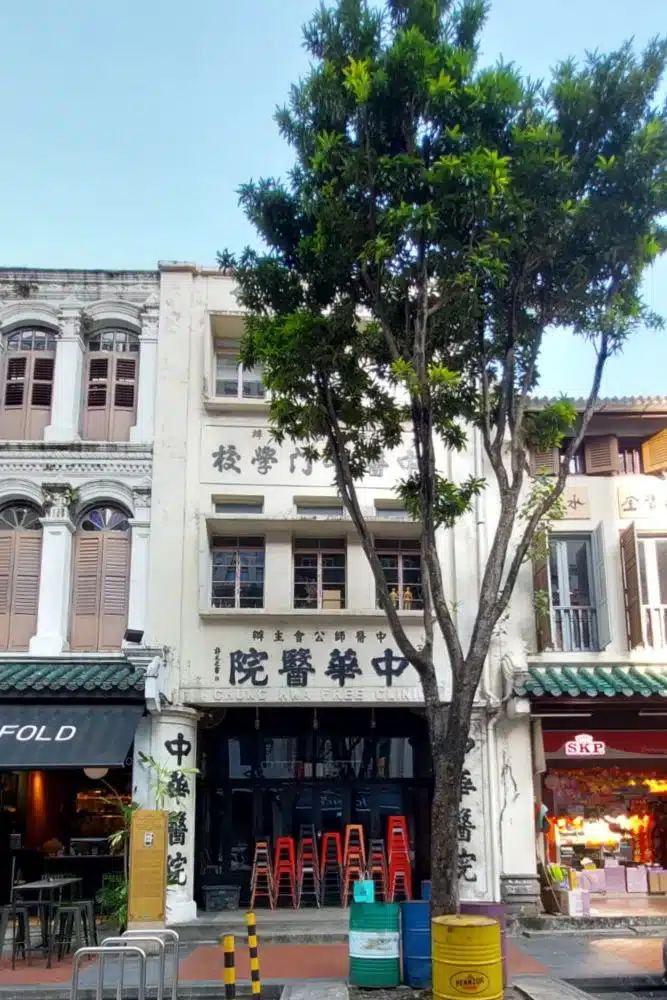
In 1952, this site was home to the Telok Ayer Chung Hwa Free Clinic, founded by Chinese volunteer doctors to provide medical care to the uninsured.
Now, there is the popular and cozy My Awesome Cafe that still retains its original facade. It should be on your list of places to eat in Chinatown Singapore.
Address: 202 Telok Ayer Street
Find Cheap Flights to Singapore
Planning your trip to Singapore? Find the best flight deals to get there for less.
CheapOair compares multiple airlines so you can book at the best price possible
End of the Walk
Now, we make our way to the Telok Ayer metro station on the Blue Line, where the Chinatown Singapore walking itinerary ends.
Along the way, take a moment to reflect on the rich history and vibrant culture you’ve experienced.
I hope that you now have a better understanding of Chinatown Singapore’s location and how to navigate it, as well as an appreciation for its origins and vibrant heritage.
Discover More Self-Guided Walks in Singapore
From colorful temples to grand colonial landmarks, here are more walks to explore on your own:
Little India – A Tapestry of Cultures & Temples
Geylang & Joo Chiat – Heritage, Food & Local Life
Colonial District – Walk Through Singapore’s Past
Orchard Road – Hidden Corners & Culture
Don’t forget to save this itinerary or share it with a fellow traveler!
This article shows you: Chinatown Singapore Self-Guided Walking Tour with Map
Pin this post
